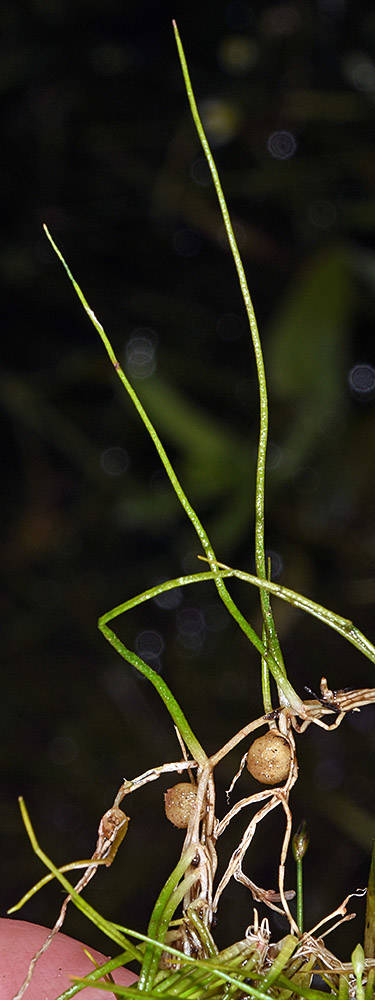
Stems creeping on mud or other substrates, submerged in shallow water or exposed, forming loose mats, glabrous.
Leaves small, 1.5–6(10) cm long, bright green, borne singly or in small clumps at fairly regular intervals along the stem usually a few millimeters apart.
Sporocarps reddish brown, globose, to approximately 2.2 mm in diameter, matted-hairy, losing much of the hair when old, borne on or just under the surface of the substrate; stalks less than 2 mm long, reflexed.
2n=20.
Seasonal ponds. 400–1700 m. BR, Sisk. CA; scattered sites throughout the US and Mexico. Native.
Due to its inconspicuous morphology, P. americana is seldom collected. As a result, this species may be more widespread and common than shown by current collection records.
as described under Pilularia americana
Plants forming dense clones. Leaves 1.6--10.2 cm, sparsely pubescent. Sporocarp stalks attached at base of leaf, 1--3 mm. Sporocarps globose, 1.6--2.7 mm diam., covered with matted hairs until mature; raphe minute, teeth lacking. Sori 4.Sporocarps produced spring--fall (Apr--Oct). In shallow water of ponds and temporary pools and on reservoir margins; 50--600 m; Ala., Ark., Calif., Ga., Kans., Mo., Nebr., N.C., Okla., Oreg., S.C., Tenn., Tex.; Mexico in Baja California.Pilularia americana also has been reported from Alaska. I have seen no vouchers from Alaska, nor have I seen the Oregon vouchers. Because of its grasslike appearance and subterranean sporocarps, P . americana is probably overlooked and more common than records indicate. The telltale circinate vernation of the leaves is the best characteristic for distinguishing it from similar plants.Pilularia caroliniana A. Braun, an invalid name, has been used for this species and may appear on specimens.